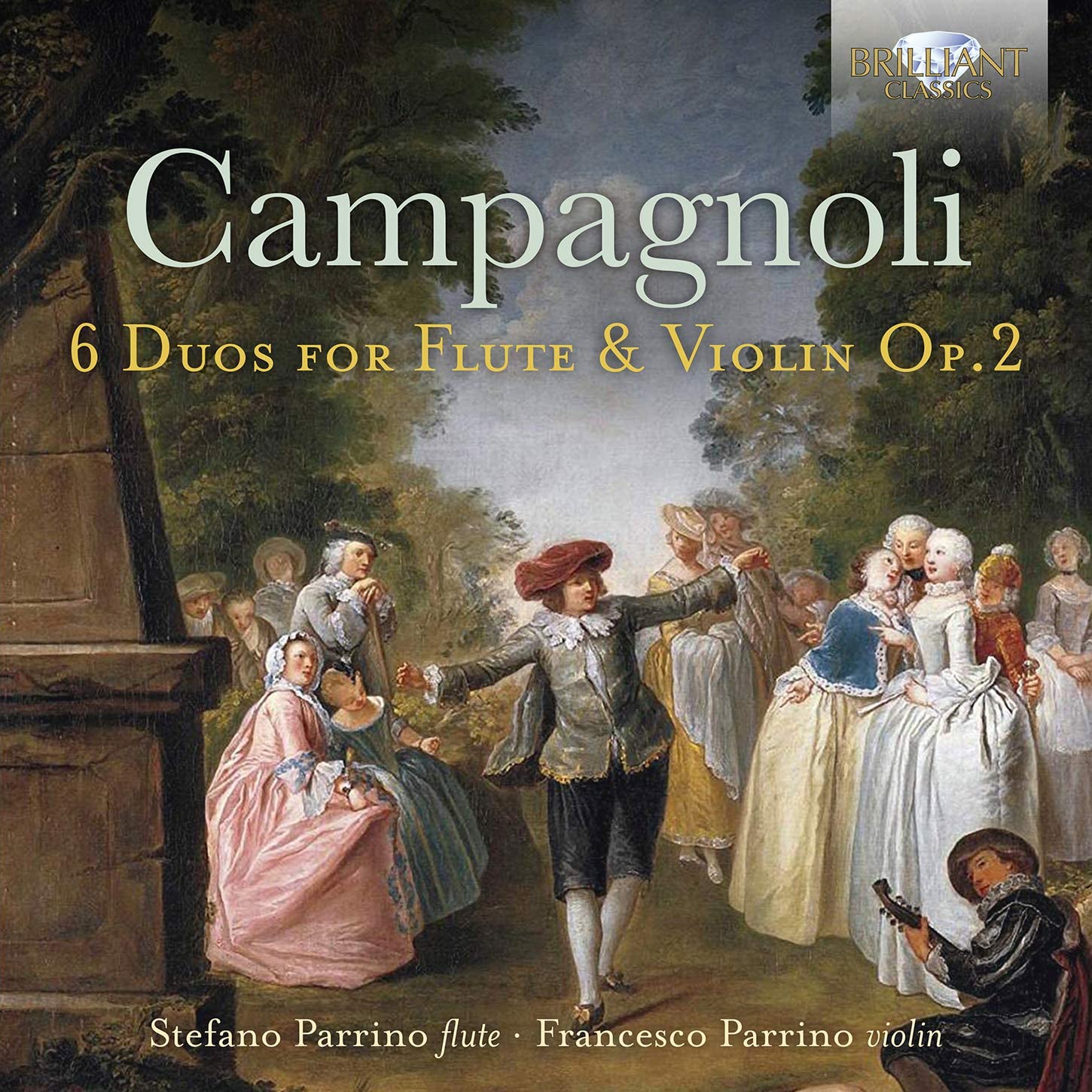Stefano Parrino flute, Francesco Parrino violin
76:52
Brilliant Classics 95974
Click HERE to buy this CD on amazon.co.uk
Bartolomeo Campagnoli was born in Bologna in 1751, studying in Venice, Padua and in Florence with the great Nardini and befriending Cherubini, before embarking on an international performance career as a violinist, which took him throughout Europe. In a curious moment reminiscent of Ben Franklin’s meeting with Louis XVI, one of Campagnoli’s concerts was listened to by Spohr, who thought his music elegant but rather old-fashioned. Indeed, by the time his op 2 Duets were published in the early 19th century, they were old-fashioned as they had been composed as early as 1780 and had not been cutting edge even then! Spohr’s evaluation of Campagnoli’s music seems to fit these Duos rather well – never dull, constantly imaginative, always tuneful but rather lightweight and belonging spiritually to the 18th century. The brothers Stefano and Francesco Parrino play modern instruments in performances which never lack passion or style, and which are beautifully coordinated. It is not clear the extent to which these Duos represent the sort of repertoire Campagnoli was wowing his pan-European audiences with as he toured from court to court – it is perhaps odd in that event that the violin usually plays the supportive role to the flute. More likely perhaps that this publication was aimed at the burgeoning market for music for amateur players, although the technical demands would limit their relevance to more accomplished and dedicated dilettante players.
D. James Ross


